Li Gong Sun
age ~72
from Bellevue, WA
- Also known as:
-
- Li L Sun
- Li Li
- Sun L Li
- Lili Sun
- Li Lisun
Li Sun Phones & Addresses
- Bellevue, WA
- Bothell, WA
- Boston, MA
- Shoreline, WA
Resumes

Experienced Mems And Packaging Engineer
view sourcePosition:
Staff Packaging Engineer at Avago Technologies
Location:
San Jose, California
Industry:
Semiconductors
Work:
Avago Technologies - San Jose, CA since Jul 2011
Staff Packaging Engineer
Qualcomm - San Jose, CA Jun 2010 - Jul 2011
Senior MEMS Engineer
Wispry - Irvine, CA Oct 2006 - Jun 2010
Staff MEMS Packaging Engineer
University of Arkansas - Fayetteville, AR Jul 2005 - Sep 2006
Research Associate
Staff Packaging Engineer
Qualcomm - San Jose, CA Jun 2010 - Jul 2011
Senior MEMS Engineer
Wispry - Irvine, CA Oct 2006 - Jun 2010
Staff MEMS Packaging Engineer
University of Arkansas - Fayetteville, AR Jul 2005 - Sep 2006
Research Associate
Education:
University of Arkansas at Fayetteville 2001 - 2005
Ph.D., Mechanical Engineering Tsinghua University 1999 - 2001
M.E., Materials Processing Engineering Tsinghua University 1995 - 1999
B.E., Mechanical Engineering
Ph.D., Mechanical Engineering Tsinghua University 1999 - 2001
M.E., Materials Processing Engineering Tsinghua University 1995 - 1999
B.E., Mechanical Engineering
Skills:
MEMS
AutoCAD
Design of Experiments
Failure Analysis
Thin Films
Matlab
JMP
ANSYS
Finite Element Analysis
AutoCAD
Design of Experiments
Failure Analysis
Thin Films
Matlab
JMP
ANSYS
Finite Element Analysis

Third Year Analyst At Credit Suisse
view sourcePosition:
Third Year Analyst at Credit Suisse
Location:
United States
Work:
Credit Suisse since Nov 2010
Third Year Analyst
Third Year Analyst

Li Sun
view sourceLocation:
United States
Medicine Doctors

Li Sun
view sourceSpecialties:
Family Medicine
Work:
Northshore Family Medical Center
1150 Robert Blvd STE 100, Slidell, LA 70458
9856461122 (phone), 8884640738 (fax)
1150 Robert Blvd STE 100, Slidell, LA 70458
9856461122 (phone), 8884640738 (fax)
Education:
Medical School
Binzhou Med Coll, Binzhou, Shandong, China
Graduated: 1997
Binzhou Med Coll, Binzhou, Shandong, China
Graduated: 1997
Conditions:
Attention Deficit Disorder (ADD)
Diabetes Mellitus (DM)
Disorders of Lipoid Metabolism
Hypertension (HTN)
Hypothyroidism
Diabetes Mellitus (DM)
Disorders of Lipoid Metabolism
Hypertension (HTN)
Hypothyroidism
Languages:
English
Spanish
Spanish
Description:
Dr. Sun graduated from the Binzhou Med Coll, Binzhou, Shandong, China in 1997. She works in Slidell, LA and specializes in Family Medicine. Dr. Sun is affiliated with AMG Specialty Hospital Denham Springs, Ochsner Medical Center North Shore and Slidell Memorial Hospital.

Li Sun
view sourceIsbn (Books And Publications)

Yinan Jun Shi Lun Tan: Guo Ji an Quan Xing Shi Da Tou Xi =Yinanjunshiluntan
view sourceAuthor
Li Sun
ISBN #
7506551152
Name / Title
Company / Classification
Phones & Addresses
Treasurer
LEE AND JUAN, INC
433 Main St, Tewksbury, MA 01876
219 Brk St, Framingham, MA 01701
219 Brk St, Framingham, MA 01701
Secretary
3EM TECH INC
109 Queensberry St #15, Boston, MA 02215
SUNRAY INTERNATIONAL CO., LTD
President
SUNCORP (U.S.A.), INC
37 Spinelli Pl, Cambridge, MA 02138
16 Grv St, Arlington, MA 02174
16 Grv St, Arlington, MA 02174
MM
Tj Packaging, U.S.A., Ltd. Co
Us Patents
-
System And Method For Three-Dimensional Calibration Of A Vision System
view source -
US Patent:20210291376, Sep 23, 2021
-
Filed:Mar 11, 2021
-
Appl. No.:17/198333
-
Inventors:Yukun Bian - Suzhou, CN
Li Sun - Sudbury MA, US
David Y. Li - West Roxbury MA, US -
International Classification:B25J 9/16
G06T 7/80 -
Abstract:This invention provides a system and method for calibration of a 3D vision system using a multi-layer 3D calibration target that removes the requirement of accurate pre-calibration of the target. The system and method acquires images of the multi-layer 3D calibration target at different spatial locations and at different times, and computes the orientation difference of the 3D calibration target between the two acquisitions. The technique can be used to perform vision-based single-plane orientation repeatability inspection and monitoring. By applying this technique to an assembly working plane, vision-based assembly working plane orientation repeatability, inspection and monitoring can occur. Combined with a moving robot end effector, this technique provides vision-based robot end-effector orientation repeatability inspection and monitoring. Vision-guided adjustment of two planes to achieve parallelism can be achieved. The system and method operates to perform precise vision-guided robot setup to achieve parallelism of the robot's end-effector and the assembly working plane.
-
System And Method For 3D Profile Determination Using Model-Based Peak Selection
view source -
US Patent:20210148694, May 20, 2021
-
Filed:Aug 24, 2020
-
Appl. No.:17/001018
-
Inventors:- Natick MA, US
Li Sun - Sudbury MA, US
Lowell D. Jacobson - Grafton MA, US
Lei Wang - Wayland MA, US -
International Classification:G01B 11/03
G06T 7/521
H04N 5/235
G06T 11/00
G06T 17/00
G06T 7/593 -
Abstract:This invention provides a system and method for selecting the correct profile from a range of peaks generated by analyzing a surface with multiple exposure levels applied at discrete intervals. The cloud of peak information is resolved by comparison to a model profile into a best candidate to represent an accurate representation of the object profile. Illustratively, a displacement sensor projects a line of illumination on the surface and receives reflected light at a sensor assembly at a set exposure level. A processor varies the exposure level setting in a plurality of discrete increments, and stores an image of the reflected light for each of the increments. A determination process combines the stored images and aligns the combined images with respect to a model image. Points from the combined images are selected based upon closeness to the model image to provide a candidate profile of the surface.
-
System And Method For 3D Profile Determination Using Model-Based Peak Selection
view source -
US Patent:20190101376, Apr 4, 2019
-
Filed:Mar 23, 2018
-
Appl. No.:15/934766
-
Inventors:- Natick MA, US
Li Sun - Sudbury MA, US
Lowell D. Jacobson - Grafton MA, US
Lei Wang - Wayland MA, US -
International Classification:G01B 11/03
G06T 7/521
G06T 7/593
H04N 5/235 -
Abstract:This invention provides a system and method for selecting the correct profile from a range of peaks generated by analyzing a surface with multiple exposure levels applied at discrete intervals. The cloud of peak information is resolved by comparison to a model profile into a best candidate to represent an accurate representation of the object profile. Illustratively, a displacement sensor projects a line of illumination on the surface and receives reflected light at a sensor assembly at a set exposure level. A processor varies the exposure level setting in a plurality of discrete increments, and stores an image of the reflected light for each of the increments. A determination process combines the stored images and aligns the combined images with respect to a model image. Points from the combined images are selected based upon closeness to the model image to provide a candidate profile of the surface.
-
Microfluidic Determination Of Immune And Other Cells
view source -
US Patent:20190101537, Apr 4, 2019
-
Filed:Mar 24, 2017
-
Appl. No.:16/087203
-
Inventors:- Cambridge MA, US
Li Sun - Somerville MA, US
John Heyman - Somerville MA, US
Xu Zhang - Cambridge MA, US -
Assignee:President and Fellows of Harvard College - Cambridge MA
-
International Classification:G01N 33/569
G01N 33/68
G01N 33/573
C12N 5/0781
C12N 5/0783
B01L 3/00 -
Abstract:The present invention generally relates to fluidic droplets and systems and methods for determining immune or other cells. Some aspects of the invention are generally directed to assays that combine sensitive detection of secreted products with detection of target cell death in droplets containing an effector cell, systems and methods to isolate droplets in which one or more cell interactions have occurred, or systems and methods to generate nucleic acid information from cell interactions. In addition, some embodiments of the invention are generally directed to containing two (or more) cells in droplets, e.g., an effector cell and one or more target cells, and determining various interactions between the cells within the droplets, such as whether the effector cell kills the target cell, whether the effector cell releases antibodies, cytokines or other substances that are able to interact with the target cell or are released in the presence of the target cell, or the like.
-
Pharmaceutical Product And Method Of Analysing Light Exposure Of A Pharmaceutical Product
view source -
US Patent:20140315187, Oct 23, 2014
-
Filed:Aug 31, 2012
-
Appl. No.:14/241882
-
Inventors:Jeremy Guo - Redmond WA, US
Deborah R. Shnek - Sammamish WA, US
Paula H. Spencer - Kirkland WA, US
Li Sun - Seattle WA, US -
Assignee:AMGEN INC. - Thousand Oaks CA
-
International Classification:B65D 79/02
-
US Classification:435 5, 206438, 53415, 436 86
-
Abstract:A pharmaceutical product includes a container having an exterior surface and an interior chamber, an active ingredient disposed in the interior chamber, the active ingredient having a photosensitive property that changes based on at least cumulative exposure to light having a wavelength within the range between X and Y, and a layer of photosensitive material disposed on or in the container and exposed to environmental conditions contemporaneous with the active ingredient being disposed in the interior chamber. The photosensitive material is reactive to light having a wavelength within the range between X and Y to experience a property change at a threshold of cumulative exposure to light received within the range between X and Y related to the change in the photosensitive property of the active ingredient. A photosensitive device can also be disposed along a path followed by the pharmaceutical product within a facility.
Plaxo

li sun
view sourceBEIJINGtour guide at Freelancer i am a english speaking tour guide in china. welcome to china to travel.
i like travlling to, i hope i can travel many places as i can.
email: ... i am a english speaking tour guide in china. welcome to china to travel.
i like travlling to, i hope i can travel many places as i can.
email: [email protected]
i am a english speaking tour guide, welcome to china.
i like travelling to many places.

Sun Li
view sourceChongqing, ChinaSSE at Hewlett Packard A paranoid
Classmates

Fowlie Primary School, Si...
view sourceGraduates:
LI Sun Chen (1984-1988),
Phua Hwee Boon (1993-1997),
Syed Sheikh Syed Sheikh (1964-1968)
Phua Hwee Boon (1993-1997),
Syed Sheikh Syed Sheikh (1964-1968)

Lowell Elementary School,...
view sourceGraduates:
Sheri Shafer (1974-1979),
LI Sun (1995-1999),
Linda Knutson (1952-1957)
LI Sun (1995-1999),
Linda Knutson (1952-1957)

International School, Kua...
view sourceGraduates:
LI Sun (1998-2002),
Laura Swartz (1998-2002),
Shirin Lim (2002-2006),
Ahmad Shakir Shark (2002-2006),
Chuck Cranston (1995-1999)
Laura Swartz (1998-2002),
Shirin Lim (2002-2006),
Ahmad Shakir Shark (2002-2006),
Chuck Cranston (1995-1999)

Lakewood High School, Lak...
view sourceGraduates:
LI Sun (1999-2003),
Dirk Diggler (1984-1988),
Kristi Larsen (1992-1996),
Cullen Cantwell (2001-2005),
Paul Ware (1974-1978),
Alex Hernandez (2000-2004)
Dirk Diggler (1984-1988),
Kristi Larsen (1992-1996),
Cullen Cantwell (2001-2005),
Paul Ware (1974-1978),
Alex Hernandez (2000-2004)
Youtube
Myspace
Googleplus
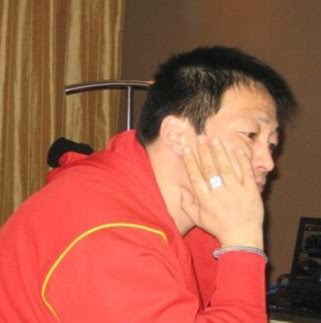
Li Sun

Li Sun
Work:
University of Missouri - Kansas City - Assistant Professor (2010)
Education:
University of Texas at Dallas - Managment

Li Sun
Education:
Fu Jen Catholic University
Tagline:
I'm a geek.

Li Sun
Education:
University at Buffalo, The State University of New York - Computer Science
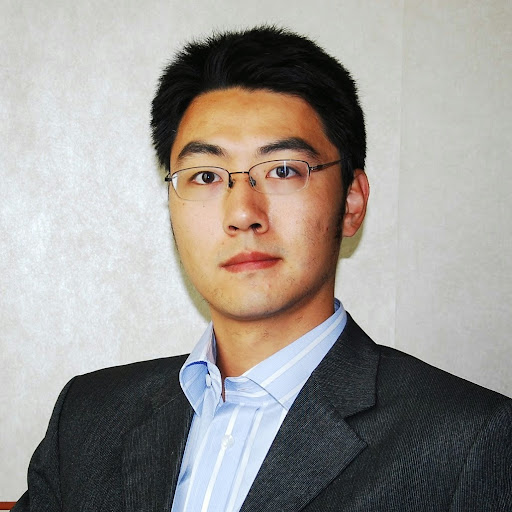
Li Sun
Tagline:
Illusion
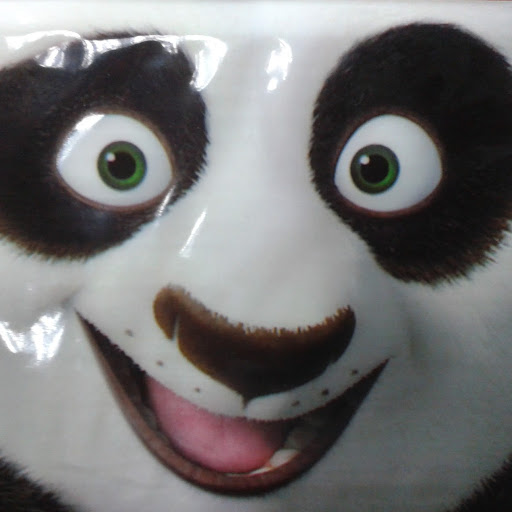
Li Sun

Li Sun

Li Sun
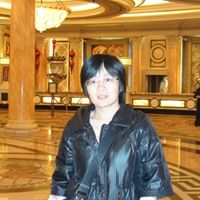
Li Sun
view source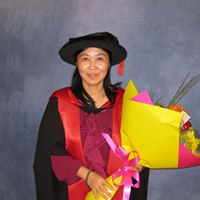
Li Li Sun
view source
Li Hua Sun
view source
Li Untouchable Sun
view source
Sun Li
view source
Sun Li
view source
Li Sun
view source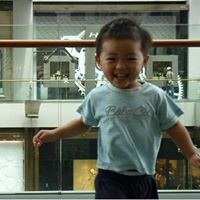
Li Sun
view sourceFlickr
Get Report for Li Gong Sun from Bellevue, WA, age ~72














